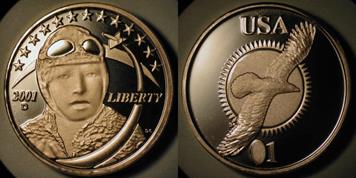Yesterday, Today and Tomorrow
This biography of Bessie Coleman was compiled by Thelma Rudd
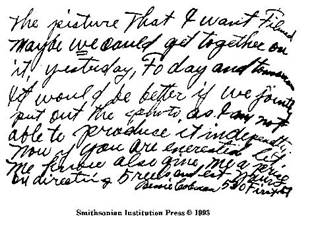
On February 3, 1926, three months before her fatal fall, Bessie Coleman wrote to film producer, R. E. Norman requesting that her life be put into a film titled, Yesterday, Today and Tomorrow”. She wanted to set in motion a continuum of not just her legacy, but of those who came before and after here. She did not live to see her request on film. Although there have been a few attempts, to date no motion picture film has been produced about this energetic, patriotic American woman who in the early 1920s used Science, Technology, Engineering and Math (STEM) via the aero plane to promote equal rights and civil rights.
Bessie Coleman was born January 26, 1893, in Atlanta, Texas, one of thirteen children. Her mother was black and her father was of American Indian and black descent. She was still a toddler when the family moved to Waxahachie, a small town thirty miles south of Dallas and she was only seven when in 1900 her father returned to Oklahoma, then known as Indian Territory. Being Indian in Texas was more dangerous than being “colored”. Coleman's mother, Susan Coleman, decided to stay in Waxahachie to raise the family as best she could. The children helped by picking cotton from late November into December of every year and the girls, as soon as they were old enough, helped with the washing their mother took in to make ends meet.
Just a few years later, December 1903, the Wright Brothers made the first sustained flight in a heavier-than-air vehicle at Kitty Hawk. Poet Paul Lawrence Dunbar was their friend and classmate. Their flight was to be a pivotal event in Coleman's life.
Because she was born with a drive to better herself, Coleman was an avid reader. Her mother ensured that the Coleman children made good use of the traveling library that came through two or three times a year.
Perhaps one of the books that inspired Coleman was “The Wonderful Wizard of Oz”, written in 1900 by Frank Baum. This best seller children’s book was produced on stage beginning in 1902 and later was turned into a Technicolor film. Baum chronicled the adventures of a scared, little girl named Dorothy who is forced into a cruel world where she meets three strangers who feel like her, feel that they are incomplete. These “incomplete” beings join forces to seek the external “Oz” who is rumored to be able to repair everything and everyone. After many disappointments and successes, Dorothy and her triage discover that they already inside themselves what they thought was missing.
Unlike most Americans in the early 1900’s, Bessie Coleman not only finished high school, she also attended college. She sacrificed her earnings from washing and ironing to attend Langston Industrial College, now Langston University in Oklahoma, but she could afford only one semester. So she dropped out, and went to live with an older brother in Chicago.
In Chicago, she attended Burnham School of Beauty Culture in 1915 for a course in manicuring. Within a year she was known as the best and the fastest manicurist in black Chicago. She sat at a window table where her customers, most of them male, could be seen being groomed by this beautiful woman. Coleman eventually went to work as manicurist at the White Sox Barber Shop, then owned by the trainer of Chicago's American League baseball club. She remained a steadfast reader and the “Chicago Defender” became her favorite source of information and its editor and publisher, Robert Abbott became her hero.
In the summer of 1919, Chicago was pounded by the worst race riot in history. A black youth on a homemade raft drifted into an area of Lake Michigan used by whites. He fell into the water and drowned after being stoned by the whites. That same night, Chicago became the Wild West with black and whites fighting in the streets with guns and knives. It carried into the next day, when a gang of whites drug blacks off the streetcar and beat them. It took four days and the National Guard to restore order to the Chicago. Although Coleman and her family were unscathed, around her, there were 38 dead, 537 injured and over 1,000 people homeless.
Like Dorothy in Oz, Coleman had traveled the “yellow brick road” - a road that was full of conflict and difficulties. She established herself in Chicago, learned a trade, found a place to live, witnessed her brothers go to war overseas and then survived a race riot. Yet, she was unwavering in her quest to move forward, and she was firm about fighting against what she believed were the evils of racism, sexism, poverty, and ignorance. When pilots began to make headlines and pictures of WWI airplanes appeared regularly in magazines, Bessie toyed with the idea of flying as a way out for her and others like her. But when her brother John teasingly told her; “You nigger women ain’t never goin’ to fly, Not like those women I saw in France ” - she smiled at him and said; “That’s it - You just called it for me. The captive audience at the barbershop witnessed that moment in time when Bessie Coleman decided to learn to fly.
So Coleman applied to almost every American flying school, but was quickly turned down. There were, of course, two reasons why Coleman couldn't find anyone to teach her to fly. Her brown skin was an obvious reason and her sex was another. The doors to the open skies over America were closed to young Bessie Coleman. But France was so different.
In 1789, a year after the Montgolfiers flew their balloon, Madame Thibaud thrilled Paris with her flights, and another French woman became so proficient that Napoleon made her one of the chiefs of his air service. In 1909, only six years after the Wrights' flight, another French woman, the Baroness Raymonde de la Roche, became the first woman pilot. Two years later, Harriet Quimby became the first licensed American female pilot - her license was administered by the Aero Club of America. Like many aviators, Quimby's career was cut short by a fatal accident little more than a year later.
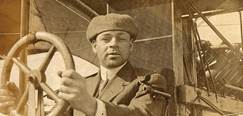
It must be interjected that in 2004, Mary Groce found a sheet of old letterhead that included a photo of a handsome brown skinned man that stated “Emory C. Malick; Pilot No 105”. Because Ms. Groce is white, she was shocked to discover that her great-uncle Emory was black! Her family had never discussed this family secret, which may explain why Malick’s story had not been archived or widely discussed. From this document it indicates that Emory Conrad Malick received his pilot’s license at the Curtiss Aviation School at North Island, San Diego in March 1912, making him and not James Banning the first African American to get a pilot’s license in the United States. He was 31 years old. Ms. Groce plans to publish her uncle’s story in the near future.
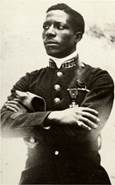 Then in August of 1917 Eugene Jacques Bullard, an American volunteer in the French army, became the first black military pilot in history. Born in Columbus, Ga., on Oct. 9, 1894, Bullard left home at the age of 11 when he witnessed his father barely escape being lynched. He settled in France as a prizefighter. When WWI started in 1914, he enlisted in the French Foreign Legion and rose to the rank of corporal. For his bravery as an infantryman in combat, Bullard received the Croix de Guerre and other decorations. In May 1917 wearing his French Royal Air Force garbs, he became the first black fighter pilot. But when America took over the allied forces, Bullard was grounded.
Then in August of 1917 Eugene Jacques Bullard, an American volunteer in the French army, became the first black military pilot in history. Born in Columbus, Ga., on Oct. 9, 1894, Bullard left home at the age of 11 when he witnessed his father barely escape being lynched. He settled in France as a prizefighter. When WWI started in 1914, he enlisted in the French Foreign Legion and rose to the rank of corporal. For his bravery as an infantryman in combat, Bullard received the Croix de Guerre and other decorations. In May 1917 wearing his French Royal Air Force garbs, he became the first black fighter pilot. But when America took over the allied forces, Bullard was grounded.
 Bessie Coleman’s persistence to get into the skies led her to share her dream with Robert S. Abbott, editor and publisher of the Chicago Weekly Defender. Abbott, captivated by the thought of a black woman pilot, did some investigating for Coleman and found that the French still possessed a kind of "aero mania" and were more liberal in their attitudes toward women and "people of color." On his advice, Coleman learned French at a language school on Chicago's Loop, she took a better-paying job as manager of a chili parlor and began applying to French aviation schools. Of course the applications had to written in French.
Bessie Coleman’s persistence to get into the skies led her to share her dream with Robert S. Abbott, editor and publisher of the Chicago Weekly Defender. Abbott, captivated by the thought of a black woman pilot, did some investigating for Coleman and found that the French still possessed a kind of "aero mania" and were more liberal in their attitudes toward women and "people of color." On his advice, Coleman learned French at a language school on Chicago's Loop, she took a better-paying job as manager of a chili parlor and began applying to French aviation schools. Of course the applications had to written in French.
With the savings from her manicurist's job and working in a chili parlor, Coleman sailed to Europe from New York City on the S.S. Impersonator on November 20, 1920. Armed with the determination and sacrifices of Bullard, Quimby and la Roche, she was not to be denied. She met this, like all the obstacles in her life, the same way - she refused to take no for an answer.
She was accepted to France’s most famous flight school - Ecole d’Aviation des Freres Cadron et Le Crotoy - managed by French aviators and plane designers Gaston and Rene’ Caudron. For the next ten months, she walked each day to the flight school and while in the air she mastered tail spins, banking and looping the loop. Aircraft were fragile, flying was hazardous and nervous students were often killed. Coleman saw more than one of her fellow students die. But the shock was not enough to deter the young women from the East Texas cotton patch. She signed a waiver of relief in case of her own death and persisted in her goal.
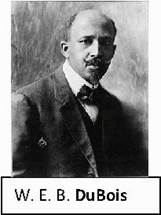
While in Europe, Queen Bess attended the Second Pan-African Congress Paris Session. This Congress was spearheaded by the renowned William Edward Burghardt Du Bois whose stated purpose was to “emerge with a program of Pan-Africanism, as organized protection of the Negro world led by America Negroes.” Her older brother, Walter was a Pullman porter. At that time Pullman porters were predominately African American and were held in high regard. They carried Abbott’s newspaper “The Chicago Defender” from the north and spread many hopes and dreams to south. To many they were considered the first generation of the Talented Tenth as expressed by W.E.B. Du Bois and Bessie intended to use aviation as a means for upward mobility for her “race”.
It is important to note that the “Tulsa Race Riot” took place on June 1, 1921. According to Bieke Gils, “this incident greatly affected and shaped African American’s perceptions of aviation.” After an unresolved lynching incident, six white pilots dropped bombs on the wealthy black Greenwood district of Tulsa, setting fire to the town and killing 75 Tulsans, two-thirds of whom were black. It was the first time in history that airplanes were used to attack an American community and this community was black. Marcus Garvey encouraged African Americans to become involved in aviation and to secure as many airplanes as possible in anticipation of a catastrophic race war. And most black newspapers promoted aviation in an effort to dispel stereotypes about African Americans being less intelligent, incompetent and lazy. Bessie Coleman was doing what everyone was talking about.
After seven months of stringent training, and two weeks after the Tulsa Race Riot, Coleman was declared to be a qualified aviator on June 15, 1921, when she received her international pilot’s license No. 18.310. She was the first American of any race or gender to be directly awarded credential’s to pilot an airplane license from the Federation Aeronitique Internationale in France. To receive this license, she had to demonstrate high skill sets comprised of life-saving maneuvers including turning off the engine before touching down.
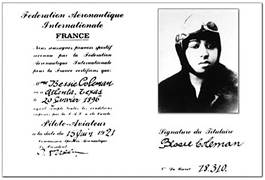 Coleman returned to New York on Sunday, September 29, 1921 on the ocean liner Manchuria. She was greeted by reporters from several national African American newspapers. White mainstream reporters largely ignored her.
Coleman returned to New York on Sunday, September 29, 1921 on the ocean liner Manchuria. She was greeted by reporters from several national African American newspapers. White mainstream reporters largely ignored her.
However, the Aerial Age Weekly, October 17, 1921, took note. "Miss Bessie Coleman," it said, "a colored girl of Chicago, twenty-four years old, who had been studying aviation in France for ten months, arrived in New York recently on the American liner Manchuria. She brought her credentials from the French certifying that she had qualified as an aviatrix. "Miss Coleman, who is having a special Nieuport scout plane built for her in France, said yesterday that she intended to make flights in this country as an inspiration for people of her race to take up aviation."
 One of Coleman’s most poignant moments was receiving a silver loving cup from the cast of “Shuffle Along” musical to commemorate her achievement. This African American musical revue with music and lyrics by Noble Sissle and Eubie Blake premiered on Broadway in 1921 and became such a hit that it caused traffic jams. It launched the careers of Josephine Baker and Paul Robeson. Presenting the silver cup to Coleman was a gesture encompassed not only respect and admiration; it was also one of compassion and recognition of the odds she had faced. After all, in 1921, these same black actors and musicians also endured the hardships of racism and segregation to perform on Broadway. Coleman gave the cup to her mother, to her yesterday and voiced to the press that she intended to perform exhibition flights to inspire African Americans to fly.
One of Coleman’s most poignant moments was receiving a silver loving cup from the cast of “Shuffle Along” musical to commemorate her achievement. This African American musical revue with music and lyrics by Noble Sissle and Eubie Blake premiered on Broadway in 1921 and became such a hit that it caused traffic jams. It launched the careers of Josephine Baker and Paul Robeson. Presenting the silver cup to Coleman was a gesture encompassed not only respect and admiration; it was also one of compassion and recognition of the odds she had faced. After all, in 1921, these same black actors and musicians also endured the hardships of racism and segregation to perform on Broadway. Coleman gave the cup to her mother, to her yesterday and voiced to the press that she intended to perform exhibition flights to inspire African Americans to fly.
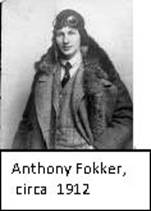 Bessie Coleman searched for employment and an airplane. However, again in America, she was continually rejected in her bids to purchase a plane and to gain employment in commercial aviation. She was disheartened with America’s treatment, but she refused to give up. Therefore, in May 1922, she once again crossed the Atlantic in an ocean liner to gain advance aviation - on the job - training in France, Germany, Holland and Switzerland. She studied with the famous WWI German ace pilot, Captain Keller and test piloted airplanes in the Netherland for Anthony Fokker, the “Flying Dutchman”. Fokker designed one of the most popular fighter planes of WWI. These men trusted her flying skills. She perfected life-saving maneuvers into finely polished aerobatic stunts - figure eights; loop the loops, trick climbs, and landing the airplane with the engine off. In Germany, she was praised for flying the largest and most awkward aircraft ever flown by a woman.
Bessie Coleman searched for employment and an airplane. However, again in America, she was continually rejected in her bids to purchase a plane and to gain employment in commercial aviation. She was disheartened with America’s treatment, but she refused to give up. Therefore, in May 1922, she once again crossed the Atlantic in an ocean liner to gain advance aviation - on the job - training in France, Germany, Holland and Switzerland. She studied with the famous WWI German ace pilot, Captain Keller and test piloted airplanes in the Netherland for Anthony Fokker, the “Flying Dutchman”. Fokker designed one of the most popular fighter planes of WWI. These men trusted her flying skills. She perfected life-saving maneuvers into finely polished aerobatic stunts - figure eights; loop the loops, trick climbs, and landing the airplane with the engine off. In Germany, she was praised for flying the largest and most awkward aircraft ever flown by a woman.
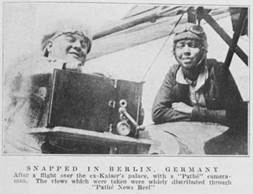 She arrived in New York on Sunday August 14, 1922. She now had among her possessions credentials from the Aero Club of France, and European newspaper articles that showed foreign royalty entertaining her. She even had an article that exhibited Anthony Fokker praising her at a banquet for being the only American aviator who ever crossed the Kaiser’s palace at Potsdam. This time she was greeted by both the black press and “The New York Times” and the “Chicago Tribune”. “The New York Times” declared that she was designated by “leading French and Dutch aviators as one of the best flyers they had seen”.
She arrived in New York on Sunday August 14, 1922. She now had among her possessions credentials from the Aero Club of France, and European newspaper articles that showed foreign royalty entertaining her. She even had an article that exhibited Anthony Fokker praising her at a banquet for being the only American aviator who ever crossed the Kaiser’s palace at Potsdam. This time she was greeted by both the black press and “The New York Times” and the “Chicago Tribune”. “The New York Times” declared that she was designated by “leading French and Dutch aviators as one of the best flyers they had seen”.
Coleman was steadfast in her primary goal of opening a flying school for blacks in America. She knew that unless someone with money and vision helped her with her goal, she would have to finance the school herself. She was a modern woman in a not so modern world. By the standards of the day, she should be married, at home having babies and at work in the kitchen. Ever the realist and perhaps the dreamer she went to work in the air.
On Labor Day, September 3, 1922, Coleman’s first air show demonstrated a flair for showmanship when she appeared before the crowd in her military-type uniform at Curtiss Airfield in Garden City, Long Island, NY. She orchestrated a program that would appeal to prevailing public American patriotism while honoring African American nationalism. The exhibit was dedicated to the segregated 15th regiment of Infantry, the first African American regiment sent to France during WWI. The Glenn Curtiss Airplane Company provided the airplane for this event. A record integrated crowd gathered. The sky was clear, the temperature was mild and this show promised to be special, since it had already been postponed once because of bad weather. She was escorted to her plane after the band had concluded the “Star Spangled Banner”. Then at 4:45, with her passenger Captain McVey, Coleman dazzled the crowd with spirals and loops. Later Hubert Fauntleroy Julian, an officer of Garvey’s Universal Negro Improvement Association of New York, parachuted from the wing of her plane. Everyone was ecstatic. She concluded her exhibition by taking individual passengers up in her plane for a $5.00 fee (About $60 in today’s economy).
Bessie Coleman’s flight exhibitions were successful because she appealed to both black and white audiences. White audiences saw her as an attractive, petite uniqueness - a tiny beautiful woman piloting an airplane. Black audiences took pride in her courage as she symbolized hope that the African American community could participate in the skies.
Shortly after her Chicago show, it was announced that she had agreed to star in a film “Shadow and Sunshine” to be produced by an African American-owned film company - Seminole. However, she failed to show up for the filming because she felt it degraded her race. She had gladly accepted the role hoping it would help advance her career and provide her with money to establish her own flying school. But when she learned the first scene required her to wear tattered clothes, with a walking stick and a pack on her back, she refused to proceed. “Clearly, her walking off the movie set was a statement of principle,” wrote Doris Rich. “Opportunist though she was about her career, she was not an opportunist about race. She had no intention of perpetuating the derogatory image most whites had of most blacks.”
Coleman’s second flight exhibition was at the annual Tri-State Fair in Memphis, TN where she was billed as “the principal thrill” for the integrated audience of the fair’s opening day, October 12, 1922. During this venue, her plane faltered and although she made a fast recovery, one young boy walked up to her and asked “Lady, didn’t’ your plane stop up there for a little while?”
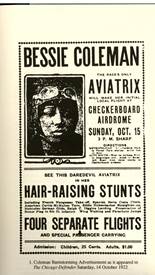 Now that she had two successful appearances behind her, the “Chicago Defender” billed Coleman as “The Only Race Aviatrix in the World”, and summoned more than 2,000 people to Checkerboard Airdrome in Chicago, now Midway Airport, for her third exhibition on Sunday October 15, 1922. Once again she honored an African American military regiment - the 8th regiment. In a series of four ten-minute flights, Coleman performed a perfect Richthofen glide and the familiar loop-the-loops. For the third part of her show, Coleman’s sister Georgia joined her in the cockpit dressed in an elaborate red, white and blue costume. Although Bessie announced to the crowd that Georgia would parachute from the plane at two thousand feet, the two argued when Georgia refused to jump. But onlookers were alarmed when it looked as though Coleman had lost control during the execution of a figure eight. To everyone's relief, she brought the great Curtiss plane into a beautiful finish. It was this sort of spirit and courage that earned Coleman the name, "Brave Bessie." From then on, Coleman was in great demand.
Now that she had two successful appearances behind her, the “Chicago Defender” billed Coleman as “The Only Race Aviatrix in the World”, and summoned more than 2,000 people to Checkerboard Airdrome in Chicago, now Midway Airport, for her third exhibition on Sunday October 15, 1922. Once again she honored an African American military regiment - the 8th regiment. In a series of four ten-minute flights, Coleman performed a perfect Richthofen glide and the familiar loop-the-loops. For the third part of her show, Coleman’s sister Georgia joined her in the cockpit dressed in an elaborate red, white and blue costume. Although Bessie announced to the crowd that Georgia would parachute from the plane at two thousand feet, the two argued when Georgia refused to jump. But onlookers were alarmed when it looked as though Coleman had lost control during the execution of a figure eight. To everyone's relief, she brought the great Curtiss plane into a beautiful finish. It was this sort of spirit and courage that earned Coleman the name, "Brave Bessie." From then on, Coleman was in great demand.
 Her fourth exhibition was sponsored by an African American realtor, Reynolds McKenzie and took place in Gary Indiana. There she met David Lewis Behncke, founder and President of the Air Line Pilots Association International who became her manager. Coleman and Behncke would later part ways when Coleman was determined to take her exhibition South. Behncke disagreed because of the hostile racial climate in the Southern states. However, Coleman was from Texas. She had experienced racism in the both the North and the South. She was unrelenting in returning to her southern roots to spread the aviation fever! She had to influence tomorrow!
Her fourth exhibition was sponsored by an African American realtor, Reynolds McKenzie and took place in Gary Indiana. There she met David Lewis Behncke, founder and President of the Air Line Pilots Association International who became her manager. Coleman and Behncke would later part ways when Coleman was determined to take her exhibition South. Behncke disagreed because of the hostile racial climate in the Southern states. However, Coleman was from Texas. She had experienced racism in the both the North and the South. She was unrelenting in returning to her southern roots to spread the aviation fever! She had to influence tomorrow!
 One Sunday afternoon thousands of spectators saw Coleman’s memorial flight in honor of Harriet Quimby over the spot in the Charles River in Boston where Quimby had been killed. Flying was a sport and it was dangerous life. Coleman was among the brave pilots who flew surplus World War I Jennies and DeHavilands, which could be bought for $200 and held together with bailing wire and glue. They flew all over finding carnivals and fairs, trying to earn a living doing what they loved most. They attracted crowds with their aerial acrobatics, wing-walking, parachuting, and diving. Then they passed the hat and offered short rides for a fee. None of the risks deterred Bessie Coleman. Her sights were bigger than yesterday or today. She wanted to influence tomorrow.
One Sunday afternoon thousands of spectators saw Coleman’s memorial flight in honor of Harriet Quimby over the spot in the Charles River in Boston where Quimby had been killed. Flying was a sport and it was dangerous life. Coleman was among the brave pilots who flew surplus World War I Jennies and DeHavilands, which could be bought for $200 and held together with bailing wire and glue. They flew all over finding carnivals and fairs, trying to earn a living doing what they loved most. They attracted crowds with their aerial acrobatics, wing-walking, parachuting, and diving. Then they passed the hat and offered short rides for a fee. None of the risks deterred Bessie Coleman. Her sights were bigger than yesterday or today. She wanted to influence tomorrow.
After agreeing to distribute advertising material from the clouds for Coast Tire and Rubber Company in Los Angeles, California, Coleman finally purchased a surplus military Jenny in late February 1923. After all her hard work and sacrifice, she had a plane of her own. However that would be short lived. Before an audience of 10,000, moments after takeoff, her motor stalled at 300 feet and her plane nosedived and fell into the ground. She survived with several broken ribs, a broken leg, and multiple lacerations. True to herself, Coleman directed a reporter to "tell the world I'm coming back." It would take almost three months before she would leave the hospital. She stayed in the Los Angeles home of Mrs. S. E. Jones until she was able to travel to Chicago. While recovering, she arranged five nightly lectures at the YMCA and showed films of her flying in both Europe and the United States. One of the film reels, from Pathe News had already been shown at a popular Las Angeles theater and showed her in Germany standing beside her plane and then airborne. She had to share the admission charge with the YMCA. She was a woman on a mission - yesterday - today and tomorrow.
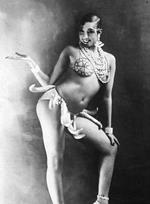 |
| Josephine Baker 1920s |
Without a plane, without a job and with very little money, Queen Bess returned to Chicago in June 1923. She made an apartment at Forty-Second and South Parkway her new home. Her new place was furnished with stuff that she had stored and she began enjoying Chicago, without the dangers of airplanes. And her life was always exciting. Like the new “flappers”, she went into the streets without a chaperone, smoked and sometimes relaxed with musicians and actors. She entertained, among others, an African prince from the Kingdom of Dahomey, Prince Kojo, conversing easily with him in French. Of course, she shared with him and anybody else who would listen, her dream of a flying school. She passed time with the beautiful singer, Josephine Baker and the famed actor/dancer, William “Bojangles” Robinson. Baker would earn her pilot’s license in 1933 in France, the same country that her friend, Bessie Coleman, received hers.
After a few months of resting and enjoying a quiet life, she scheduled an air show for September 3, Labor Day in Columbus, Ohio. This time the Chicago Defender made no mention of her venue. However, the white owned Columbus Dispatch gave her exceptional publicity. But this Labor Day flight show would not happened because the rain would not stop. And while she and more 2,000 people waited - a few miles away there was an all-day celebration of the Ku Klux Klan at the state fairgrounds. The rain didn’t damper the Klan festival. There was music, initiations and even a marriage ceremony.
Meanwhile David Behncke continued to schedule her in the Midwest area. When she returned to Columbus she received letters of welcome from both the Governor of the state of Ohio, Vic Dohaney and the Mayor of the City of Columbus, Jas. J. Thomas. Armed with their blessings, on September 9, 1923, Queen Bess returned to Columbus and dazzled the integrated crowd of 10,000 with her flying skills.
Dare-devil Bessie now felt that it was time for her to take her show south. Maybe like Dorothy in the Wizard of Oz, she had found herself and she was ready to tap her heels and go home - go back south. This decision would end her relationship with Behncke, who believed that given the racist climate in the South, such an endeavor would be suicidal for Coleman’s career, if indeed not for Coleman. His premonitions were right. But Coleman had to fulfill her dreams. She decided to break her formal ties with Behncke and in May 1925 she arrived in Houston, Texas. With Houston as her base of operations, she embarked on her southern barnstorming career. Between flights, she dazzled crowds in movie houses and churches with her accounts of aerial adventures.
Her first flight exhibition was on June 19, 1925 or Juneteenth, the anniversary of the day blacks in Texas learned that they could longer be held in bondage. President Lincoln signed the Emancipation Proclamation on January 1, 1863, however it would be more than two and a half years, June 19, 1865 when Union troops marched into Texas before it would take effect. Some sixty years later, Texas blacks were leaving the state in record numbers to escape the horrible conditions of Jim Crow laws. However, Coleman’s show proved that Texas blacks were courageous and they were not afraid to fly. The city’s leading black newspaper, the “Houston Informer” reported that it was “the first time colored public of the South had been given the opportunity to fly. They also noted that the majority of the fearless passengers were women. Queen Bess left the citizens of Houston with the fever to fly!
She accepted speaking engagements and flying stunts to raise funds for her dream of a flight school for “Negroes”. Doris Rich, in her book on Bessie, said "as an aviator she was a threat to whites who cherished their racial superiority, and as a woman pilot she threatened the ego of black males." Queen Bess - Daredevil Aviatrix was a true champion of her race. She refused to appear in any air show that did not allow blacks to attend. Her motto was "No Uncle Tom stuff for me." She was determined to bolster black pride and refused to promote the stereotypical, derogatory image most whites had of blacks. She especially appealed to African American women to take in interest in aviation and she began to lecture more with her 2,000 feet of film of her performances in Europe and the US. Besides, lectures brought in more income that would bring her closer to her dream of a flight school. But she never charged any admission to students - she knew that they were her inspiration to become future pilots.
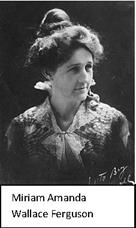
In August 11, 1925, this world famous aviatrix was warmly received at the Governor’s Mansion in Austin by Governor Miriam “Ma” Ferguson, the first female governor of Texas and the wife of Ex-Governor James A. Ferguson. A strong opponent of prohibition and an advocate for tenant farmers, “Ma” Ferguson succeeded her husband after he was impeached. Ferguson did not fear neither did she cooperate with the Ku Klux Klan. In fact, one of her first acts in office was to pardon a large number of black prisoners.
Bessie also flew exhibitions in her home town of Waxahachie. She knew that some people regarded her as a curiosity, and she also knew that part of her attraction was the ever-present danger of flying.
But for Queen Bess, her obsession to undermine the “Uncle Tom” image was ever present. In an interview with The Houston Post Dispatch (7 May 1925), she stated that her intentions were “to make Uncle Tom’s Cabin into a flying hangar.” She continued that “she plans to establish a flying school and teach the Negro to fly so they can be better citizens and will able to serve their country better.” She performed twice in Waxahachie, her childhood home and there refused to perform unless there was only one integrated entrance. At one performance in Wharton, Texas, a woman parachutist failed to show and the crowd began clamoring for its money back. Coleman strapped on a parachute and made the jump herself. She always did what she thought had to be done.
Coleman’s influence extended beyond society’s racial lines. One of her fans was Paul McCully, a young white man. McCully later became the National Governor of the OX-5 Pioneers - pilots who flew planes with the OX-5 engine. In an interview with Doris Rich, he credited Bessie Coleman for helping him launch his flying career. His father agreed to him take flying lessons only after seeing Bessie Coleman’s flights - “Well, son, I guess if they can do it you can too.” McCully soloed one month later.
Coleman left Texas and returned to Chicago for a few months. Then in January 1926, she arrived in Savannah, Georgia and gave her aviation lecture at a local theater. She spoke and showed her films in Augusta and Atlanta and finally moved on to Florida. Her first appearance was at Liberty Theater in St. Petersburg then at theaters in Tampa and West Palm Beach. She became in high demand. Perhaps understanding the importance of her life, she wrote Norman Studios, an African American film producer to request to have her life immortalize through film. Always the optimist, she wanted it to be titled, “Yesterday - Today & Tomorrow” and although Norman Films responded with interest, for some reason the correspondence stopped and the film was never produced.
Coleman accepted an invitation to stay in the Orlando home of Reverend Hezekiah Keith Hill, and his wife Viola Tilling hast Hill. He was pastor of the Mount Zion Missionary Baptist Institutional Church and both of them were respected community leaders. Encircled by this fortress of faith, Coleman professed her belief in public and declared that she was now a ‘born-again” Christian. Viola disapproved of Coleman’s fund-raising through her flying and limited her to doing lectures and showing her films. But that would never pay for an aviation school, so the two of them opened a beauty shop in Orlando. That brought Coleman a little closer to her dream.
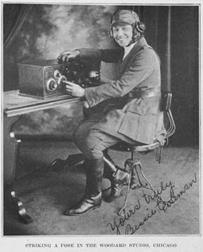 According to some sources, “Brave Bess” was so admired by the mayor of Bithio, FL that he “once drank to her health by offering her a bottle of ginger ale, then letting his wife follow Bessie in drinking from the bottle, and then drinking from it last himself.”
According to some sources, “Brave Bess” was so admired by the mayor of Bithio, FL that he “once drank to her health by offering her a bottle of ginger ale, then letting his wife follow Bessie in drinking from the bottle, and then drinking from it last himself.”
Then in the spring of 1926, Coleman was asked to perform at the annual celebration of the Negro Welfare League in Jacksonville, Florida. Edwin Beeman, a rich, young white man, who was fascinated by aviation and who was son and sole heir of Harry Beeman of the Beeman Chewing Gum Company. Edwin gave her money for her final airplane payment. Bessie arranged for the plane to be flown from Texas to Jacksonville, FL where an exhibition was scheduled for May 1, 1926.
Finally, things were beginning to look better for Coleman. Her flight exhibition was being sponsored by the Negro Welfare League. They also arranged for a series of speaking engagements for her at churches and theaters. As usual, Coleman also took it upon herself to visit the African American public schools so she could talk to the children about aviation. The proceeds from this show plus money from the beauty shop would enable her finally to open her flight school.
 In the meantime 24-year old white mechanic/pilot for Curtiss Southwestern Airplane and Motor Company, William D. Wills, had taken off from Love Field in Bessie's Jenny with a ninety horsepower OX-5 engine. It took Wills 21 hours to reach Jacksonville. Originally only three stops had been scheduled, but engine problems forced him to make two additional landings in the Mississippi towns of Meridian and Farmingdale. It took twenty-one hours to fly from Dallas to Jacksonville. Later local pilots were amazed that Wills had even made it to Jacksonville as the 90 horsepower engine was so worn and poorly maintained it could only develop about 60 horsepower at most. Wills was Coleman's newly acquired mechanic and publicity manager and he was to fly with her during exhibitions.
In the meantime 24-year old white mechanic/pilot for Curtiss Southwestern Airplane and Motor Company, William D. Wills, had taken off from Love Field in Bessie's Jenny with a ninety horsepower OX-5 engine. It took Wills 21 hours to reach Jacksonville. Originally only three stops had been scheduled, but engine problems forced him to make two additional landings in the Mississippi towns of Meridian and Farmingdale. It took twenty-one hours to fly from Dallas to Jacksonville. Later local pilots were amazed that Wills had even made it to Jacksonville as the 90 horsepower engine was so worn and poorly maintained it could only develop about 60 horsepower at most. Wills was Coleman's newly acquired mechanic and publicity manager and he was to fly with her during exhibitions.
On April 29, Coleman saw her long time mentor, editor Robert Abbott in a Jacksonville restaurant. Those who were there remembered later Bessie's unrestrained praise for this man who had given her start in aviation. Some say that they remembered that Abbott, as if he had some premonition, advised Coleman not to carry out her plans for a test flight. But Coleman had promised John Betsch, a young graduate student from Howard University, a ride in her plane after the trial flights.
The next morning, Betsch drove Coleman to Paxon airfield to meet Wills. When Wills declared that the plan was ready for takeoff, Coleman moved to her knees and said a prayer. She asked him to take control of the airplane so she could study the field for a good site to jump. 
Ten minutes into the test flight, with Wills piloting, the plane went into a nose-dive maneuver from 3,000 feet. At 2,000 feet, the aircraft suddenly flipped over and Coleman fell to her death. For some reason Coleman, who had always been extremely safety conscious, was not wearing a seat belt or a parachute.
Wills, who was strapped in, fell with the plane and died instantly on impact, about 1,800 feet from where Coleman's body lay. Minutes after the plane hit the ground, while police were trying to extricate Wills' body, Betsch, distraught after the crash, lit a cigarette and unconsciously tossed his match to the ground, igniting spilled gasoline. Coleman’s young pilot, William Wills and the wreckage went up in flames. Later, it was found that a loose wrench had jammed the plane's controls.
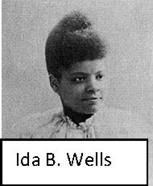 April 30, 1926, Bessie Coleman's life and unlikely career came to an end. Spectators who came to see a show instead filed through Lawton L. Pratt's modest funeral home by the hundreds to say a last farewell to "Brave Bessie." After over five thousand people attended the two memorial services (Bethel Baptist Institutional Church and St. Phillip Episcopal Church) in Jacksonville, her coffin was put on a train to Orlando, where her adopted family, the Hills, were preparing for another service at Mount Zion Missionary Baptist. When her body was being raised into the baggage car in Orlando, Florida enroute to Chicago, more than five hundred voices hummed, “My Country Tis of Thee”.
April 30, 1926, Bessie Coleman's life and unlikely career came to an end. Spectators who came to see a show instead filed through Lawton L. Pratt's modest funeral home by the hundreds to say a last farewell to "Brave Bessie." After over five thousand people attended the two memorial services (Bethel Baptist Institutional Church and St. Phillip Episcopal Church) in Jacksonville, her coffin was put on a train to Orlando, where her adopted family, the Hills, were preparing for another service at Mount Zion Missionary Baptist. When her body was being raised into the baggage car in Orlando, Florida enroute to Chicago, more than five hundred voices hummed, “My Country Tis of Thee”.
Bessie Coleman’s remains were placed in a U.S. flag-draped casket and were given a military escort from six uniformed pallbearers, overseas veterans of the African American Eighth Infantry. Ida B. Wells Barnett, passionate speaker for equal rights from Holly Springs, Mississippi, was mistress of ceremonies at Dare Devil Bessie’s last funeral at Pilgrim Baptist Church in Chicago. Over 5,000 people gathered in and around the church. Coleman was buried that day in Lot 580, Section 9, of Chicago’s Lincoln Cemetery.
Coleman’s dream of a flying school for African Americans became a reality when Lieutenant William J. Powell established the Bessie Coleman Aero Club in Los Angeles in 1929 and on Labor Day, 1931, the flying clubs sponsored the first all-black air show in America, an event that attracted 15,000 spectators. "Because of Bessie Coleman," wrote Powell in Black Wings 1934, dedicated to Coleman, "we have overcome that which was worse than racial barriers. We have overcome the barriers within ourselves and dared to dream". Powell served in a segregated unit during World War I, and tirelessly promoted the cause of black aviation through his book, his journals, and the Bessie Coleman Aero Club.
 Queen Bess continues to receive accolades and honors such as: Memorial Day Fly Over in Chicago; USA Postage Stamp; Texas Aviation Hall of Fame; National Aviation Hall of Fame, Dayton, OH; Chicago O’Hare Airport is on 10000 Bessie Coleman Drive; Bessie Coleman Room at FAA Headquarters; Bessie Coleman Middle School; Bessie Coleman Aviators Club; Mop Top Shop Scientist; Bessie Coleman Library; Black Wings - Smithsonian DVD, Team Bessie Air Race Team and National Great Blacks Wax Museum, and Bessie Coleman Aerospace Legacy .
Queen Bess continues to receive accolades and honors such as: Memorial Day Fly Over in Chicago; USA Postage Stamp; Texas Aviation Hall of Fame; National Aviation Hall of Fame, Dayton, OH; Chicago O’Hare Airport is on 10000 Bessie Coleman Drive; Bessie Coleman Room at FAA Headquarters; Bessie Coleman Middle School; Bessie Coleman Aviators Club; Mop Top Shop Scientist; Bessie Coleman Library; Black Wings - Smithsonian DVD, Team Bessie Air Race Team and National Great Blacks Wax Museum, and Bessie Coleman Aerospace Legacy .
Since 1931, each year, on the anniversary of her death, black pilots fly over her grave at Lincoln Cemetery in Chicago and drop flowers in her honor. On her gravestone, in the style of the '20s, is a tinted photograph of Bessie in her military-style flying uniform.
This information was compiled from biographies about Bessie Coleman found in Code One Magazine; Lifting As She Climbed, Bessie Coleman’s Contributions to the Elevation of Black Women; Bessie Coleman, The Brownskinned Lady Bird; Queen Bess, Daredevil Aviator; Up in the Air - The Story of Bessie Coleman; Bessie Coleman Aviatrix - Pioneer of the Negro People and The Only Race Aviatrix in the World: A Tribute to Bessie Coleman.

